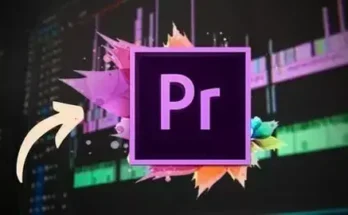Publisher: Truefire | Language: English
Video: MP4, 960×540 (16:9), 971 Kbps, 29.970 fps
Audio: MP3, 192 Kbps, 48 Khz, 2 channels
Size: 707 Mb
Generally speaking, most rock grooves are based on 8th-note rhythms, while most funk
grooves are based on 16th-note rhythms. Jon Finn’s Rhythm Lab: Rock & Funk will not only
explain in detail how 8th-note and 16th-note rhythms work, you’ll put those rhythmic
principles to work across a series of rhythm guitar performance studies.
”Let’s face it. If you spend any time working in a band, most of your time will be spent
playing rhythm guitar. Good bands want good rhythm guitar players. Oh, and by the way, the
best lead guitarists have a great sense of rhythm. So improving your rhythm improves all
aspects of your playing.
In this Rock & Funk edition of Rhythm Lab, you’ll play your way through a series of
examples and performance studies that feature the most commonly used patterns in rock and
funk. By the end of this course, you’ll have a deeper understanding of how these rhythms
work. Better yet, you’ll learn how to make up your own rhythms and never be at a loss to
come up with the perfect rhythm for any of the songs you play.”
“I have been waiting for this course to come out. Finally, I got it yesterday & worked
through the 8th note exercises. I love it!!! Jon is really a good teacher, he understands
guitar players struggles. I really enjoy this course.” – Hing Chung Fung, TrueFire Student
Jon organized this edition of Rhythm Lab into three sections. In the first section, you’ll
dig into straight eighth note rhythm patterns and displacements.
”Now, at it’s concept, it’s very simple – you learn how to accent on the first 8th note,
then the second 8th note, then third, etc. all the way to the eighth. If you look at it on
a piece of paper, it’s very simple to look at, however, keep in mind that each accent as it
sits on the beat feels very different from the rest. When you start combining them, that’s
when things get a little challenging. It’s kind of surprising how different they all
sound!”
In the second section, you’ll move into sixteenth note territory and work through some of
the many accents, displacements, and combinations available to you.
”It’s easiest to count 16th notes like “one-y-and-a-two-y-and-a-three-y-and-a-four-y-and-
a”. We’re going to do accents on the first 16th note, then the second 16th note, third,
then fourth, etc. and then we’ll do combinations of displacements of those 16th notes.
Also, instead of chugging 8th notes like we were doing before, we’re going to be doing
muted strums to represent the unaccented 16th notes, and a chord to represent an accent.”
Finally, in the third section, Jon will guide you through five real-world performance
studies. Jon will first perform each study for you over a backing track, and then breakdown
the performance emphasizing the rhythmic principles in play.
Jon will explain and demonstrate all of the key concepts and approaches along the way.
You’ll get standard notation, tabs, and diagrams for the key examples and performance
studies. Plus, Jon includes all of the rhythm tracks for you to work with on your own. In
addition, you’ll be able to loop or slow down any of the performances so that you can work
with the materials at your own pace.
Grab your guitar and let’s get pump up our rhythmic prowess with Jon Finn!
[toggle title=”Home page”]https://goo.gl/WXN6RU[/toggle]

http://alfalink.to/a8496550a837c055118d
Please REPORT in Comment Broken Links




